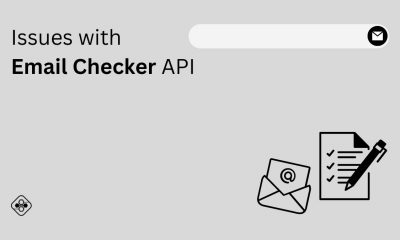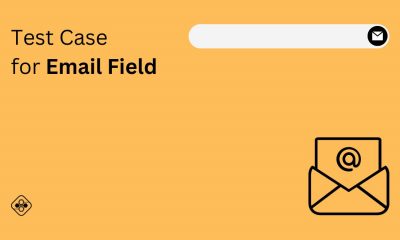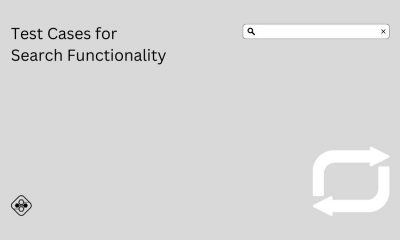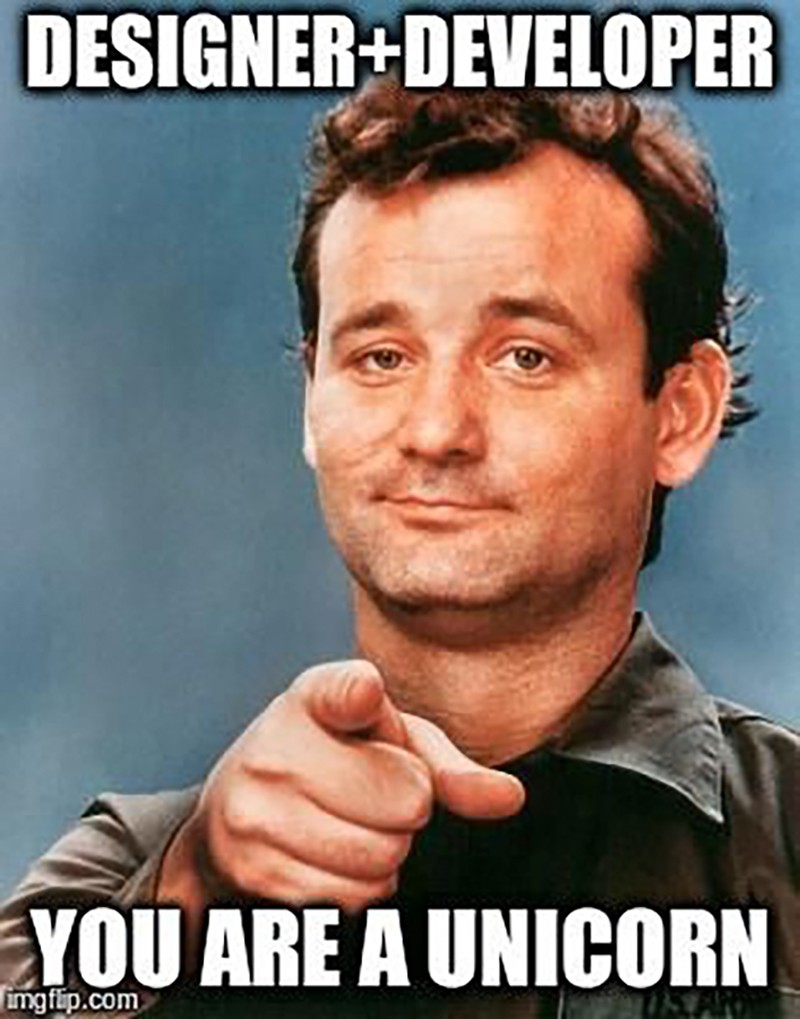Testing Tools
How to Write Email Validation Test Cases
.jpg)
Are you struggling with writing email validation test cases? It’s time to show those pesky typos who’s boss. In this blog, I’ll provide tips and tricks on how to write effective email validation test cases. Get ready to take your email testing game up a notch!
Introduction
Email validation tests are designed to ensure that an email address is correctly entered and formatted correctly. These tests are used to verify whether an email address will pass validation checks, such as checking for the correct syntax and domains, making sure that the email is properly formatted, and checking for unwanted characters.
Email validation tests are important because they help improve the accuracy of your data entries and provide a higher level of security for sensitive data, such as passwords or credit card details.
Writing effective test cases for email validation can be challenging but rewarding when done correctly; it requires a thorough understanding of the data being tested. In this guide, we will discuss various key elements of writing effective test cases for validating emails including:
- Determining the type of tests needed;
- Developing steps to execute the necessary test activities;
- Creating data-driven pre-condition rules and post-condition assertions;
- Using built-in assertion methods to validate emails;
- Creating mock emails to use in testing scenarios; and
- Finally reporting on results.
By following these guidelines you should be able to quickly create meaningful test cases that can aid in verifying your application’s email validation process.
Understanding Email Validation
Email validation is a process of verifying that an email address exists and is valid, whether it is in a web form or as part of user account creation. It allows businesses, online services and websites to ensure that the information they receive from their customers is valid.
Email validation tests need to be written carefully to make sure that only valid emails pass your test cases. To start, it’s important to understand the anatomy of an email address—which includes the username, @-sign, domain name, dot (.), and top-level domain (TLD). First and foremost, any email validation test must check for these five pieces of information in order to validate if an email address is indeed valid or not. Additionally, special characters like dashes (-) or underscores (_) should also be accounted for in the username within your test cases.
The other aspect of email validation tests is to verify:
- if a particular domain name exists;
- if a typical format such as x@y.z has been followed; and
- if the username entered does not contain invalid characters such as apostrophes (‘).
The most comprehensive way for companies to do this kind of validation is by querying an SMTP server to check whether the given user actually exists at the specified domain—that would mean that it’s more likely for you receive communications from them since their account does exist on a mail server.
Finally, it’s important for companies to be aware of any internationalization issues when writing their email validation tests. Foreign users may sometimes use different character sets like Cyrillic or Greek instead of Latin ones found in English characters—companies must consider those scenarios while developing their own tests so they do not accidentally filter out valid emails written with those character sets.
Types of Email Validation
When it comes to testing email validation within software applications, there are certain types of tests that should be conducted. These test cases are designed to verify that the email address provided is valid, and whether or not it meets the criteria laid out by standards and/or regulations. Below are common types of email validation tests that can be done.
- General Format: One of the basic email validation checks is to verify if the address provided contains a valid syntax or format. Tests should include making sure an @ symbol is present, along with other characters such as periods, hyphens and underscores in the address fields. All emails should also follow specific length parameters as set by internet standards and other applicable regulations.
- Domain-Specific Validation: Domain-specific validation involves testing the domain name portion of an email address to see whether or not it can accept incoming emails from other servers. This test helps to assess a domain’s capability to receive messages sent from outside sources and will tend to target certain character strings in the domain portion of an address.
- Syntactical Validity Test: A syntactical validity test checks characters like periods, hyphens and even spaces within each portion of an email’s format (local-part/domain part) for accuracy. This type of check helps detect any typing errors that may have been made while entering in a personal email address. It also tests validity against organizational conventions like maximum character limits per section (e.g., username@companyname(maxlength).com).
- DNS Validity Test: Often called “MX record” testing, this type of check evaluates whether or not a domain name listed on an email exists on a public DNS registry. It determines whether or not individual domains exist online when classified against top-level domains (TLD) such as .org, .net, etc., and second-level domains (SLD) like google mail (GMail). Results gleaned from these checks help validate an entry field’s ability to receive emails from external sources successfully.
Writing Test Cases for Email Validation
Creating test cases for email validation is a vital part of validating input in forms and ensuring that the system is not vulnerable to attack. While there are many methods to do this, the following guidelines should help you create complete test cases that cover all aspects of email validation.
First and foremost, it is important to understand the rules of validating an email address. For example, an email address must have at least one @ symbol and at least one full stop (or period) after the @ symbol has been used. The domain name must also be included after the full stop, as well as a two-character top level domain such as .com or .net.
Once these rules have been understood a comprehensive set of test cases can be developed. These should include boundary value tests that check addresses with each rule set (that is, tests which include no @ symbol or no full stop). In addition, random inputs such as invalid characters and strings should be tested to determine how resilient software or websites are when validating emails.
Lastly, on-demand parameters can be tested for additional resilience with some software allowing users to enter up to five different email addresses with various input methods being used regarding special characters (such as: , _ etc.). It’s always beneficial to provide a list of valid inputs such as those outlined in RFC 5322 and validate them against user input within forms or profiles on websites. This can help reduce common errors arising from incorrect use of syntax.
Designing Test Scenarios for Email Validation
Designing test scenarios for email validation is an important part of developing quality software. In order for tests to adequately cover valid input and reject invalid input, the test designer should consider various aspects of email address syntax. This may include:
- Formatting: verifying that all email addresses comply with accepted formats and are syntactically correct.
- Presence of certain characters: ensuring certain characters (e.g. “@”, “.”) are present in the right places, with extra characters correctly rejected;
- Length: verifying that no restriction was applied to the maximum length of an email address.
- Domain type: ensuring domain type (e.g. .com) is supported.
- Automatic name resolution: checking if a name resolution was done automatically or not.
- Completness of subdomain name elements: verifying that all subdomain name elements (such as lhs, mhs) were included.
- Country code top level domains (CCTLD): verifying if country code domains such as .ca, .de are accurately processed and validating their codes/symbology complexities.
- Validity of emails at server side : checking if there is validity checks at the server side too which will require us sending raw emails strings to the server via API calls & then validate responses from it.
Additionally, during testing, attention should be paid to input cases related to internationalization such as national character support or using alpha-2 country codes instead of names – since these can vary from one language/country region to another. As each scenario is designed and tested, so measures can be taken to ensure its robustness and data integrity regarding email validation processes throughout a system implementation life cycle.
Testing Email Validation
Email validation is an important process for website validation and general software testing. While basic email syntax is usually straightforward enough to implement, more complex rules such as maximum character lengths, bans on certain TLD (top level domain) names, or different verification methods for certain countries can make it more challenging to handle properly.
It’s important to make sure any email selection processes within the application have adequate test coverage. There are a few areas that should be covered when writing email validation test cases:
- Formatting: Verify that the email address contains all of the components required by RFCs 822 and 853 (for example local part, @ sign, domain name).
- Length: Test that any maximum length restrictions are enforced appropriately. This includes the local part being under 64 characters long, and the entire address being no longer than 254 characters long.
- Banned domains: Ensure that domains which have been banned from certain functions are correctly rejected (e.g., will not accept .ru or .co domains < both banned in some applications).
- Disallowed characters: Validate that addresses can only contain alphanumeric characters, hyphens and periods in appropriate places only. Spaces or other special characters check should be undertaken if they would normally be accepted by the system but then rejected elsewhere within the application.
- Verification method by country of origin: Test different email verification methods depending on where the user is signing up from – some countries may require SMS verification as well as standard confirmation emails sent out upon registration purposes.
Common Pitfalls in Email Validation Testing
Email validation testing is an important part of ensuring that an application or system can process emails correctly. To ensure accuracy and reliability, it is important to be aware of the common pitfalls associated with email validation testing.
First, it is essential that testers have a complete understanding of what constitutes a valid email address. Email addresses are made up of two parts: the user name (before the @ symbol) and the domain name (after the @ symbol). Common formatting errors that lead to email addresses being rejected include:
- Incomplete strings
- Invalid characters
- Invalid domain names
- Incorrect ordering of characters
- Duplicate information
- Keyed-in typos which can all result in emails not being processed properly.
Second, attention must also be paid to edge cases such as internationalized email addresses with different character sets and alternate top-level domains such as .club or .net which are becoming increasingly popular. Depending on how your software handles them, test cases should incorporate both domestic and international domains to ensure maximum compatibility.
Finally, you should also be aware of any additional logic built into your system such as auto-completion or blacklisted words/phrases; these features may also need to be tested for accuracy and reliability. By taking these common pitfalls into consideration during your test planning process you can save yourself time and energy when making sure that emails are validated successfully within your software or application.
Conclusion
In conclusion, email validation is an important part of any software development project as it ensures that any given email address is authentic. Writing effective test cases for email validation requires thorough testing strategies, coverage of all the scenarios and secure data input.
From simply ensuring that the user input is of a valid length to checks for illegal characters, testing should be across multiple combinations of test data. In addition, proper documentation should always be in place so that all the scenarios and assumptions can be mapped out and agreed upon by all involved parties.
By following these guidelines in your own project, you will ensure that your email validation process is secure and reliable.
Frequently Asked Questions
Q1. What is Email Validation?
A1. Email Validation is a process that ensures an email address is valid and exists. It also checks if the domain name of the email address is valid and active.
Q2. What is the purpose of Email Validation Test Cases?
A2. Email Validation Test Cases are used to test the accuracy of an email address. It checks if the email address is valid and if the domain name is active.
Q3. What are some important email validation test cases?
A3. Important email validation test cases include checking the format of the email address, making sure the domain name is valid and active, and checking if the email address is already in use.
-

 Solution Review2 days ago
Solution Review2 days agoChoosing the Right Software for Your Company
-
News1 day ago
1337x Proxy site List
-
Solution Review2 days ago
M4uFree.fun Free HD TV Online
-

 Web Development1 day ago
Web Development1 day agoEasy Web Augmented Reality with AR Quick Look
-

 Software Development1 day ago
Software Development1 day agoUnderstanding the Total Cost of Ownership in Software Acquisition
-
Solution Review2 days ago
How to Unblur an Image
-
Software Development1 day ago
Python SimpleHTTPServer
-

 Solution Review5 days ago
Solution Review5 days agoNubee.ai Undress Bot – Worth Trying?












